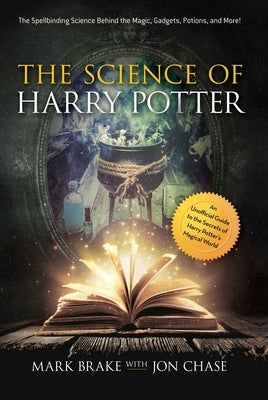Description
- Will we ever see an invisibility cloak?
- How hazardous is a flying broomstick like the Nimbus 2000?
- How has medicine made powerful potions from peculiar plants? (Felix Felicis, anyone?)
- Can scientists ever demonstrate Wingardium Leviosa, or the flying power of a Golden Snitch?
- Is it possible to stupefy someone?
- And many more
Often perceived as a supernatural force, magic captivates and delights its audience because of its seeming ability to defy physics and logic. But did you ever wonder if science has any explanation for these fantastic feats? The Science of Harry Potter examines the scientific principles behind some of the spells, scenes, and games that Harry, Hermione, Ron and Dumbledore love best. Author Mark Brake, whose The Science of Star Wars was a knockout success, has found the answers to satisfy the curious spirits of muggles everywhere. Here is a perfect Harry Potter gift for anyone obsessed enough to stand in line to see Harry Potter and the Cursed Child or Fantastic Beasts and Where to Find Them. Witches and wizards and even muggles everywhere will be fascinated by the merging of this improbable realm and real science
Author: Mark Brake, Jon Chase
Publisher: Racehorse
Published: 11/14/2017
Pages: 224
Binding Type: Paperback
Weight: 0.60lbs
Size: 8.90h x 6.00w x 0.90d
ISBN13: 9781631582370
ISBN10: 1631582372
BISAC Categories:
- Young Adult Nonfiction | Science & Nature | History of Science
About the Author
Mark Brake developed the world's first science and science fiction degree in 1999. He also launched the world's first astrobiology degree in 2005. He's communicated science through film, television, print, and radio on five continents, including for NASA, Seattle's Science Fiction Museum, the BBC, the Royal Institution, and Sky Movies. He was one of the founding members of NASA's Astrobiology Institute Science Communication Group. He has written more than a dozen books, including Alien Life Imagined for Cambridge University Press in 2012. Mark also tours Europe with Science of Doctor Who, Science of Star Wars, and Science of Superheroes road shows.

